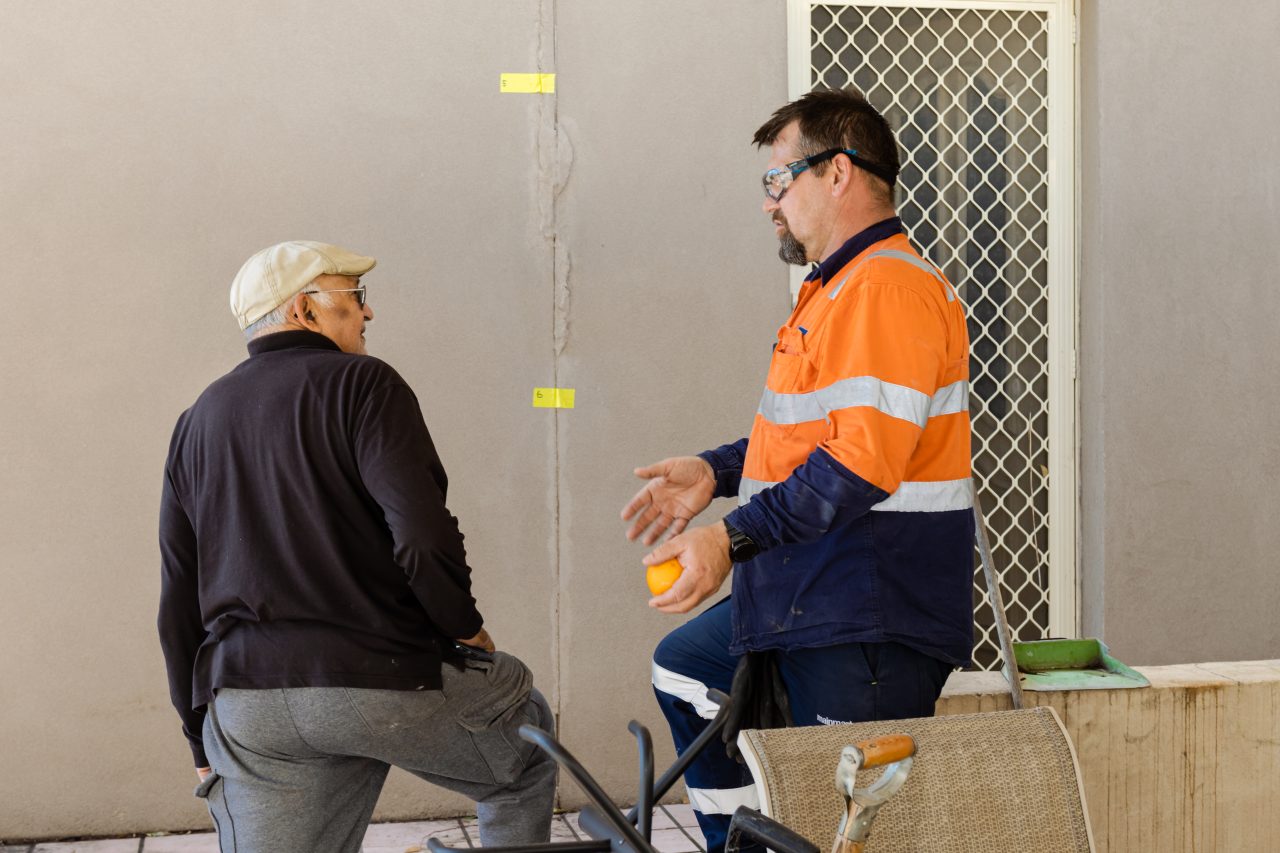What Are the Common Signs that a Building Requires Underpinning?
Here are some of the common signs that indicate a building may require underpinning.
Each issue listed provides more detail to help you recognise potential problems and understand why they occur.
Common Signs that a Building Requires Underpinning:
1. Cracks in Walls or Floors
Cracks are one of the most obvious signs of foundation trouble. Look for:
- Vertical or Diagonal Cracks: These may occur in interior or exterior walls, especially near windows, doors, or corners. Diagonal cracks are often caused by uneven foundation settling.
- Horizontal Cracks: These can indicate more severe structural stress, especially in basement walls, and may suggest soil pressure pushing against the foundation.
- Cracks in Floors: Slab floors, particularly in basements, may develop cracks if the foundation beneath shifts or sinks.
- Recurring Cracks: Patching a crack only for it to reappear often signals an underlying foundation problem rather than superficial damage.
2. Uneven or Sloping Floors
Sloping or uneven floors are a telltale sign of a shifting foundation. This can manifest as:
- Noticeable Slants: Place a ball or a round object on the floor and see if it rolls toward one side.
- Sagging or Dipping Areas: Some parts of the floor may feel lower or appear sunken compared to others.
- Wide Gaps at Floor Edges: You might notice a separation between the floor and walls or baseboards, especially if the floor sinks as the foundation settles.
3. Sticking Doors and Windows
When a foundation shifts or settles unevenly, it can cause frames for doors and windows to become misaligned. Signs to watch for include:
- Difficulty Opening or Closing Doors: The door may jam at the top or bottom or refuse to latch properly.
- Windows Sticking or Cracking: Windows may get stuck or develop small cracks in the glass or frame.
- Gaps Around Frames: You might see gaps between the wall and the door or window frame, allowing drafts or insects to enter.
4. Separation of Building Elements
As a foundation moves, different parts of the structure can begin to pull apart:
- Walls Pulling Away: Interior or exterior walls may separate from adjoining walls, ceilings, or floors.
- Chimneys Tilting or Separating: A leaning chimney is a serious concern as it can become unstable or collapse.
- Detached Masonry or Brickwork: Gaps may form between bricks, and mortar joints may crumble, indicating stress in the structure.
5. Foundation Damage
Visible signs of movement in the foundation itself can often be observed, including:
- Settling or Sinking Areas: Parts of the foundation may appear lower or uneven compared to the rest of the structure.
- Tilting Foundation: This is more severe and can result in visible tilting or leaning of the entire building.
- Buckling or Bowing Walls: Foundation walls may bulge inward or outward, indicating soil pressure or structural failure.
6. Water Damage
Water is one of the most common contributors to foundation problems. Key indicators include:
- Persistent Dampness in Basements or Crawl Spaces: Excess moisture can weaken the foundation and lead to mold or mildew.
- Pooling Water Around the Foundation: Poor drainage or improperly graded land can cause water to collect near the foundation, leading to erosion or hydrostatic pressure.
- Spalling or Deteriorating Concrete: Water intrusion can cause concrete to weaken, crack, or flake over time.
- Efflorescence: White, chalky stains on basement walls or floors often indicate water seepage and mineral buildup.
7. Structural Instability
Signs of structural instability in the building itself might include:
- Unusual Vibrations or Shaking: A stable structure should not wobble when people walk or move inside.
- Bowing Walls: Interior or exterior walls may appear to curve outward or inward under pressure.
- Unusual Noises: Creaking, cracking, or groaning sounds can sometimes indicate structural stress caused by foundation problems.
8. Soil Issues Around the Foundation
The condition of the soil surrounding the foundation often gives clues about potential foundation issues:
- Soil Erosion: Water runoff can wash away soil around the foundation, leaving it unsupported.
- Shrinkage or Settlement of Soil: Expansive clay soils may shrink significantly in dry weather, pulling away from the foundation.
- Voids or Gaps: Spaces between the foundation and surrounding soil are clear signs of instability and poor compaction.
9. Interior or Exterior Cosmetic Damage
While some signs may seem purely cosmetic, they can indicate deeper issues:
- Peeling Paint or Wallpaper: Movement in the foundation may cause cracks in walls, which allow moisture to seep in and damage finishes.
- Tiles or Grout Cracks: Shifting foundations can cause cracks in tiled floors or walls, particularly in bathrooms or kitchens.
- Decks or Porches Separating from the Main Structure: External features that pull away from the building can suggest foundation movement.
10. Other Signs
- Uneven Roofline: A sagging or uneven roofline may be a symptom of foundation settling, as it often pulls other parts of the structure out of alignment.
- Plumbing Problems: Cracked foundations can damage pipes, leading to leaks, low water pressure, or slow drains.
- Increase in Utility Bills: If gaps or cracks allow air drafts, you may notice higher heating or cooling costs.
- Mainmark provides underpinning in, Canberra, Hobart, Townsville NSW, QLD, SA, WA, Tasmania, Victoria plus the major cities of Sydney, Melbourne, Perth, Adelaide, Brisbane, Newcastle
Mainmark also provide the following in Australia: wall crack repairs, sinking floor repair, Concrete slab repair, sinking foundation repair, underpinning, ground improvement, re-levelling, subsidence repair, void filling and slab lifting

When Should You Take Action?
Expert Assistance for Foundation Issues
If you notice any of these signs, it’s important not to delay. Minor foundation issues can escalate into serious structural problems over time. Contact a structural engineer, foundation repair specialist, or contractor to assess the situation. They will:
- Perform a thorough inspection.
- Identify the root cause of the problem.
- Recommend the best underpinning method (e.g., mass concrete underpinning, mini-piled underpinning, or beam-and-base underpinning).
Timely intervention can prevent further damage, ensure safety, and preserve the value of your property.
Mainmark provides underpinning in, Canberra, Hobart, Townsville NSW, QLD, SA, WA, Tasmania, Victoria plus the major cities of Sydney, Melbourne, Perth, Adelaide, Brisbane, Newcastle
Features & Benefits of Resin Injection Underpinning
Mainmark’s Solutions & Technologies

Fast
Our technologies have fast curing times and treated areas can be used immediately or without the delays compared to traditional repair methods.

Environmentally Inert
Our technologies use an inert material that is non-toxic and does not leach into the environment or affect the treated area.

Non-Invasive
Our solutions are of surgical nature compared to traditional methods.

Cost-Effective
Compared to traditional methods, our solutions are more cost-effective, with minimal disruption to the area.
Get a FREE quote
Arrange a site assessment in 3 simple steps:
Step 1
Submit your enquiry using our online form. Include a brief message about the type of foundation issues you are experiencing.
Step 2
Our friendly customer service team will be in touch to schedule a site assessment that suits you.
Step 3
One of the Mainmark experts will visit your home or property, assess the damage, and ascertain the likely cause. They will establish the approach needed, creating a plan specific to the needs of your building and provide you with a detailed quote.































